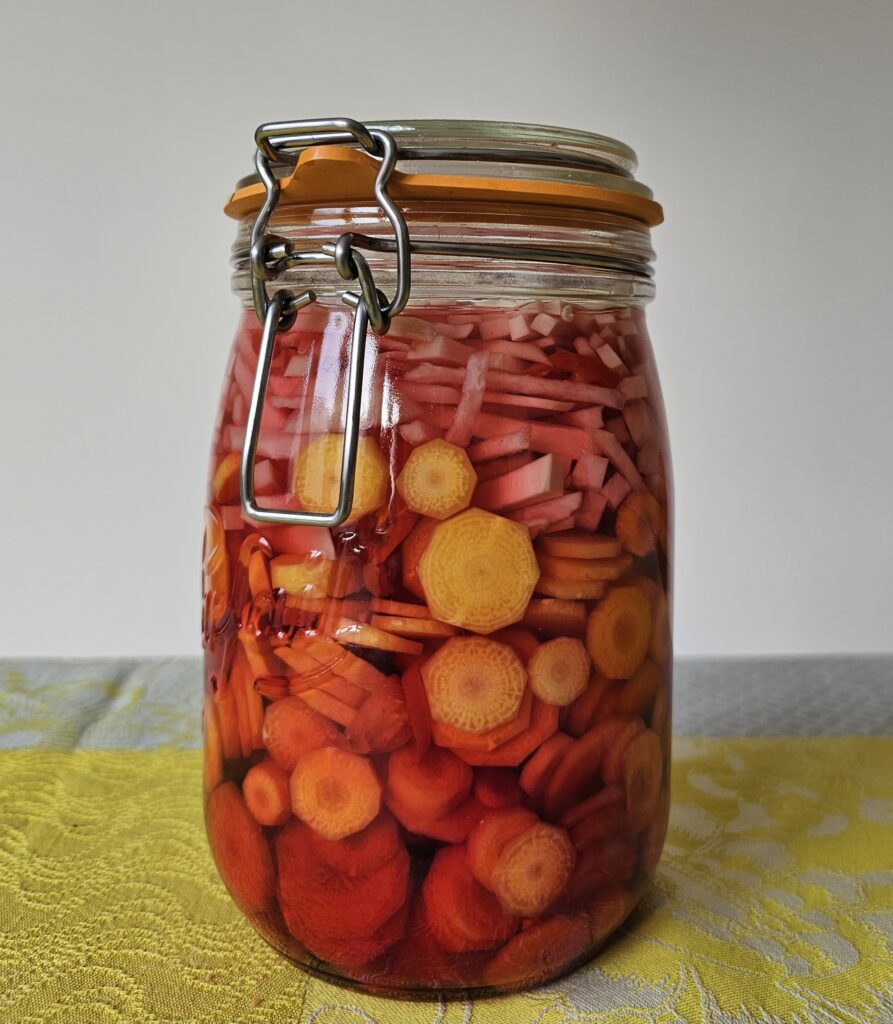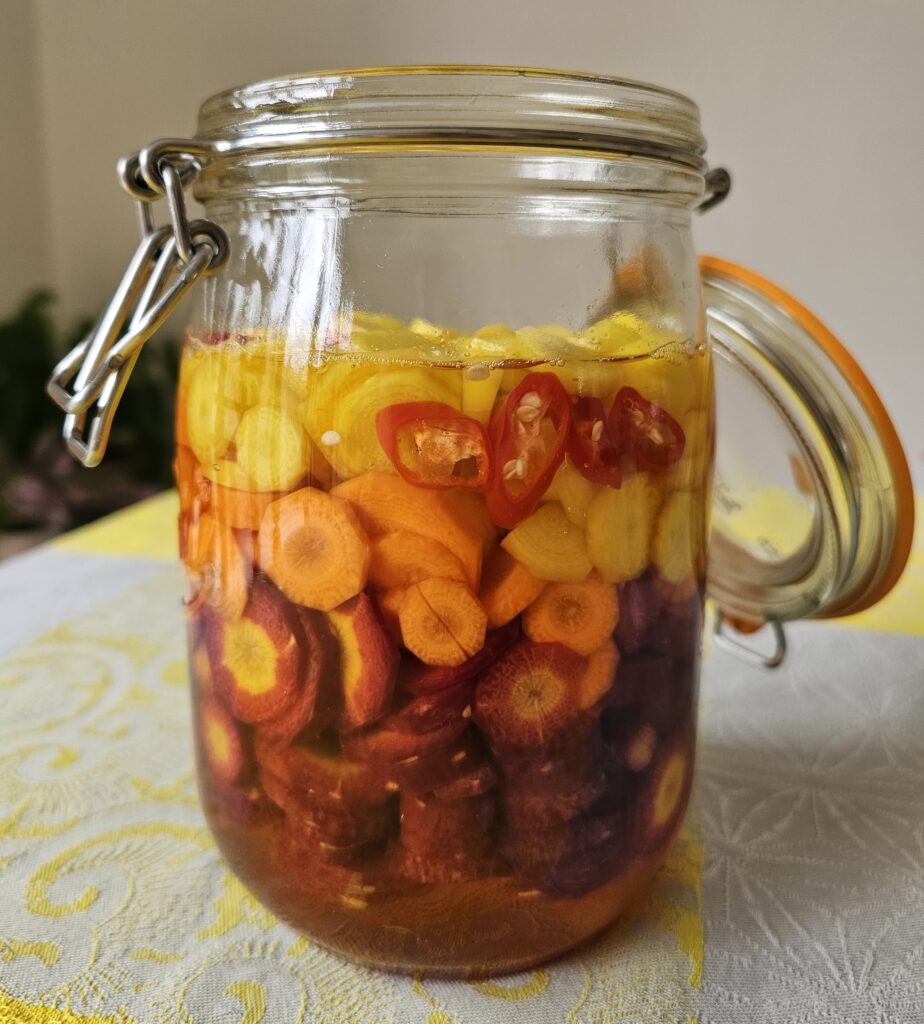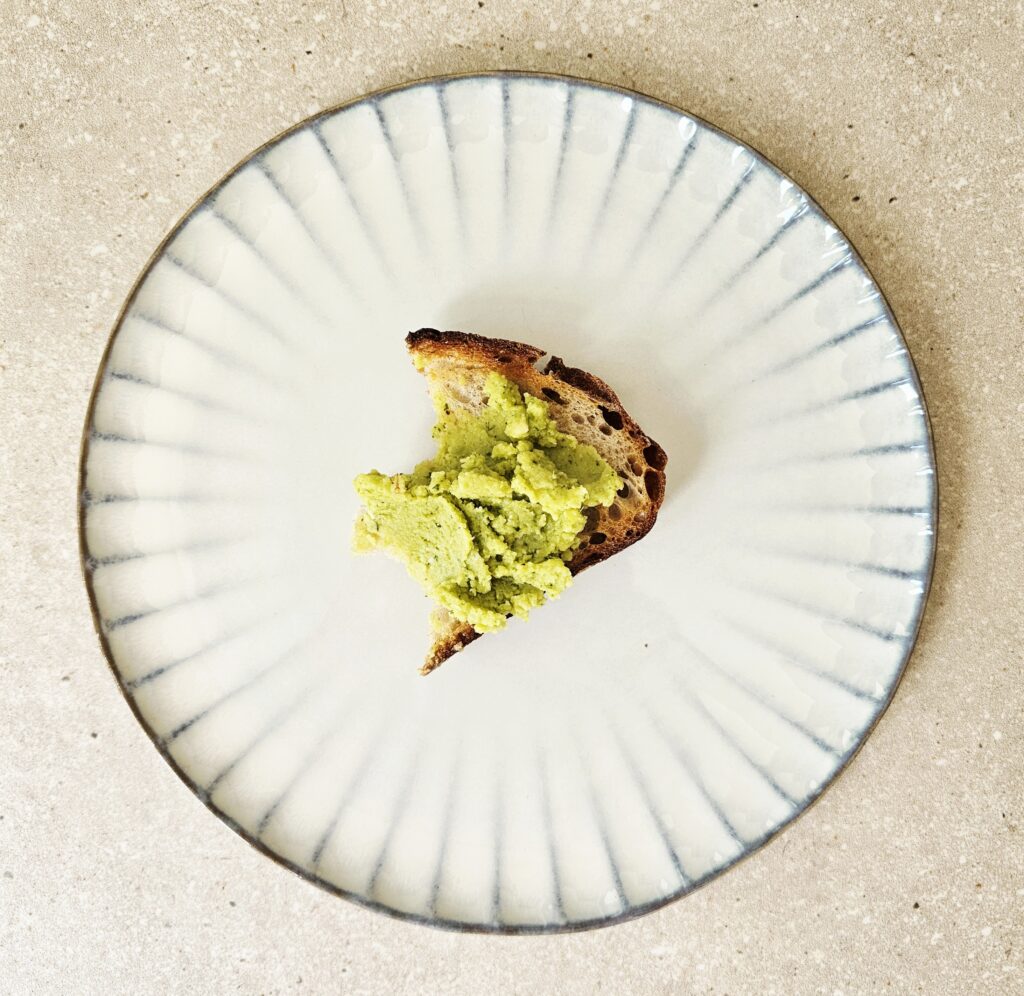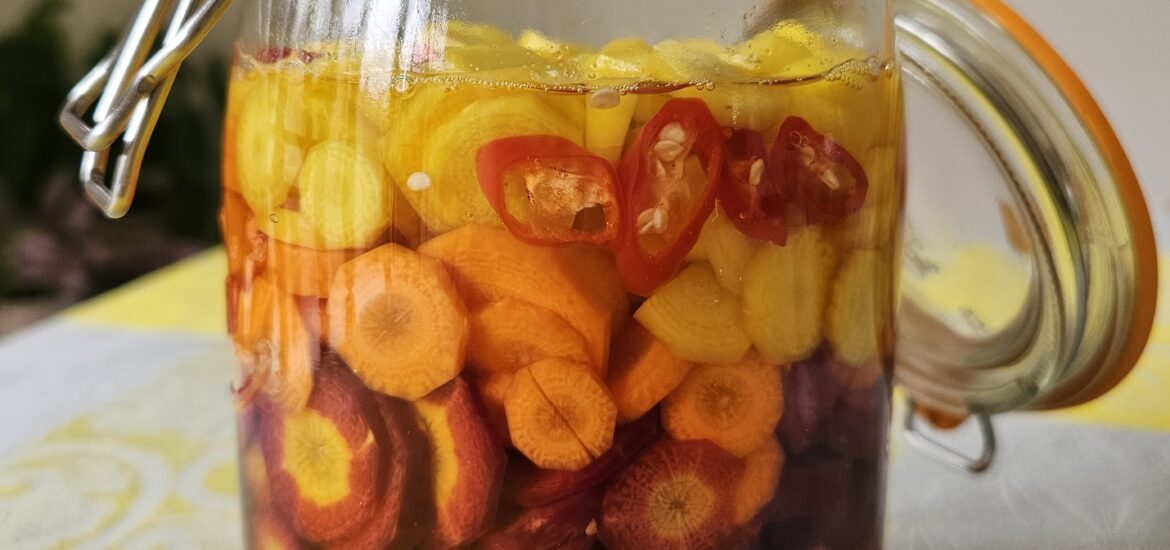
As I mentioned in the previous post, I am not really into pickles. Far too sour, far too harsh, one bottle or tin that seems to last forever.
I do like Japanese pickled ginger, the type that accompanies raw fish, but these are often artificially coloured and sweetened. The same goes for Korean pickled radish, which are dyed bright yellow.
Here is my first attempt at pickling. It turned out very well and I may be a new convert to this style of adding vegetables to my diet.
This recipe is adapted from FERMENT, by Kenji Morimoto (published by One Boat, ISBN 978-1035053742). This is part instruction and part recipe book. If you don’t want to make your own kimchi, miso, pickles, kombucha or cheong (one part sugar to one part fruit), you can use ready made versions of these items and cook from the given recipes.
In the book (page 117) the recipe is for kombucha pickled carrot and daikon. You can make your own kombucha but the book suggests using vinegar as a substitute.
I used a mixture of purple, orange and yellow carrots, along with a small celeriac. The purple carrots made the pickling brine pale pink which was a nice touch. However, at the end of the process the purple carrots turned into orange carrots, on account of the dye leaching out.
In future I would consider using purple carrots again to colour eg sliced ginger or other pale-coloured vegetables like daikon/ mooli, celeriac, radishes and turnip. At a push, using a small beetroot cut into matchsticks would also yield similar results, with the beetroot retaining its colour.

For the Pickle:
375 g apple cider vinegar (I used Aspall brand)
240 g filtered still water
100 g unrefined caster sugar
1 tablespoon fine sea salt
1 – 2 mild red or green chilli, thinly sliced
500 g carrots, peeled and sliced into 0.5 mm pieces
300 g celeriac, peeled and cut into matchsticks
How to Make:
(there is a ‘golden ratio’ for the vinegar, water and sugar. This is 3:2:1 i.e. 3 cups vinegar, 2 cups water, 1 cup sugar. I have given the weighed measurements for half this amount above)
Place the vinegar, water, sugar, salt and chillies in a small saucepan. Gently heat until the sugar has dissolved.
Remove the saucepan from the heat and set aside to cool a little.
Whilst the brine is cooling, prepare the carrots (sliced) and celeriac (into matchsticks). Try to get the vegetables in a uniform size so they pickle evenly.
Place the carrot and celeriac in a large pickling jar and fill it with the brine.
Leave overnight at room temperature and then transfer to the fridge.
The pickles will be ready to eat after a day and are best consumed within a month.
I could not fit all the celeriac in with the carrots, so stored them in a separate jar

These pickles make a good addition to other small plates, set out whilst your friends and family wait for the main meal to be served. Try the following: grilled artichokes in olive oil, buttery Nocellara or small Kalamata olives, kimchi tomatoes, some soft mozzarella or burrata, slices of cured ham, pan-fried slices of halloumi or knife-cut pieces of parmesan, home-made hummus or broad bean pesto (original recipe here and my adaptation below). Add some some good bread/ crackers and a glass of wine, and I guarantee a convivial atmosphere to the start of your meal.
Broad Bean Pesto
This is more like a hummus and I used it successfully on toast and crackers.
250 g podded broad beans (around 600 g in their pods)1 large garlic clove
30 g fresh basil leaves
30 g toasted pine nuts
30 g parmesan, grated
juice of 1 lemon
125 g olive oil
Bring a saucepan of hot water to the boil, lower the heat, add the unpodded beans and simmer for around 4 minutes or until tender.
Drain the beans into a colander and refresh under cold water.
Squeeze the beans out of their pods. The pods have a tough outer skin and you may have to make a cut or tear in the skin in order to remove the beans.
Place the podded beans (250 g, adjust the other ingredients if you have more beans) and all the other ingredients into a food processor and pulse until you get a smooth paste – the texture as I can describe it is like hummus.

In the next post I will share a recipe for breakfast pancakes that are so light it will give a massive lift to the start of your weekend.
